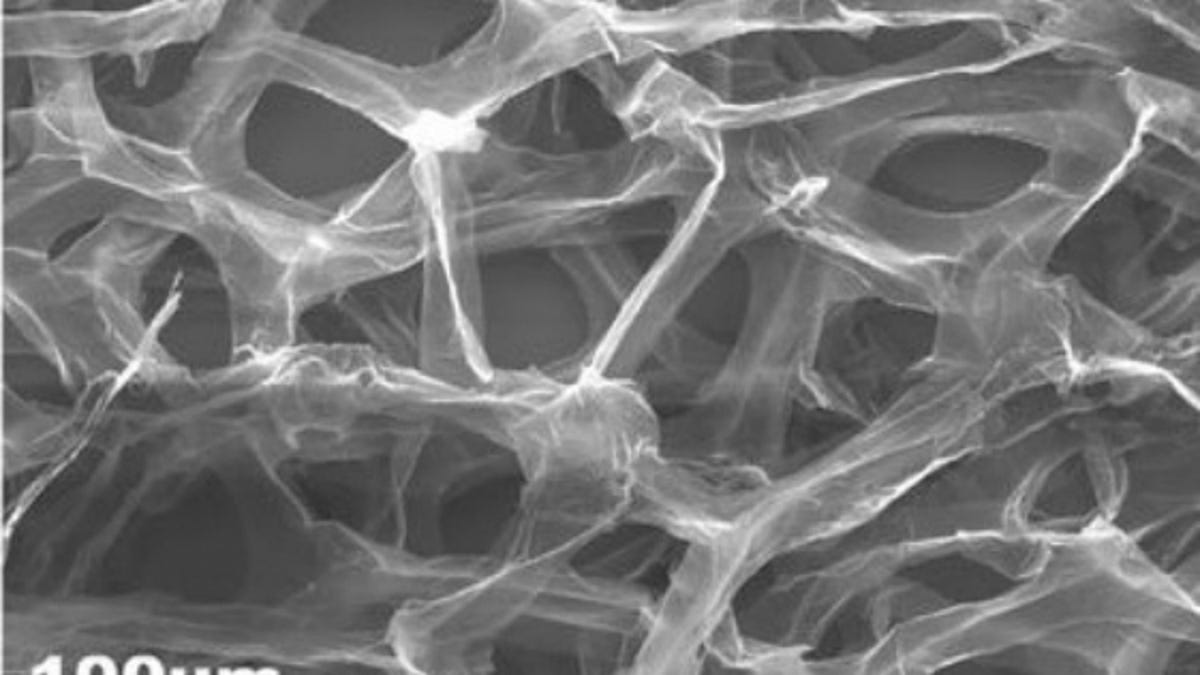'Graphene foam' sensor sniffs out bombs
This porous material is far more sensitive than the current sensors used by bomb squads to identify gases from nitrogen-based explosives. It also detects leaks of dangerous industrial gases.

A mesh of one-atom-thick graphene foam could become man's best friend in sniffing out explosives.
The Rensselaer Polytechnic Institute announced last week the creation of a graphene material that is 10 times more sensitive when detecting gases than current sensors used by bomb squads. It's also robust and can be made cheaply, according to its inventors.
Using the material to sense ammonia and nitrogen dioxide gases given off by explosive devices could lead to more sensitive and long-lasting tools for bomb detection. It can also be modified for industrial and medical uses in which sensors detect leaks of harmful gases, according to Troy, N.Y.-based RPI.
The scientific advance in the research is the ability to engineer graphene with a complex structure that can be produced as a continuous sheet. That means the nanomaterial has the desired high surface area but can be produced without having to laboriously connect one patch of foam to another, explained RPI engineering professor Nikhil Koratkar who co-authored a paper on the material in Nature.
"In a sense, we have overcome the Achilles' heel of nanotechnology for chemical sensing," he said in a statement. "A single nanostructure works great, but doesn't mean much when applied in a real world device in the real world. When you try to scale it up to macroscale proportions, the interfaces defeat what you're trying to accomplish, as the nanostructures properties are dominated by interfaces."
Graphene is the name used for a sheet of carbon atoms that is one atom thick. To make a three-dimensional, chicken wire-like sheet of graphene, Koratkar and his collaborators at the Chinese Academy of Sciences grew a layer of graphene on a structure of nickel foam in a furnace. The nickel layer was then stripped away, leaving the foam-like graphene sheet about the size of a postage stamp.
The material works as a gas sensor because nitrogen dioxide and ammonia cause a chemical change on the graphene strands of the foam. By measuring the change in electrical resistance, an instrument would be able to accurately measure gas levels, Koratkar said.
In proof of concept tests, the foam structure of few layers of graphene sheets was able to detect much lower levels of gas traces and was able to operate at room temperature, rather than the high temperatures required by some sensors, RPI said.
The material should be rugged enough to be placed inside a detection devices and be "cleaned" by passing a current through it, which will cause the gas particles to heat up and detach from the structure. In the Nature paper, the authors said the material can be as durable and made at about the same costs as current sensors.

